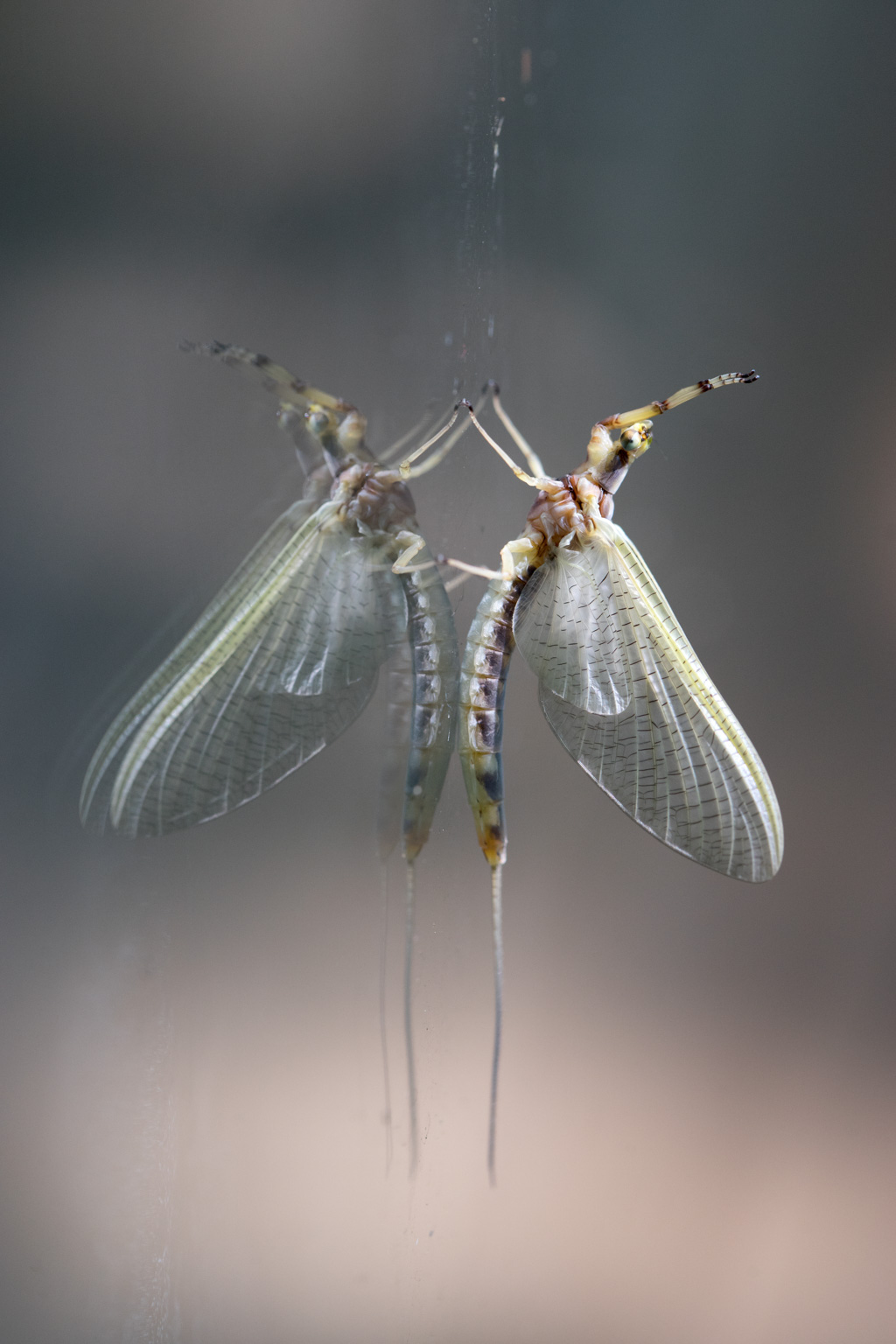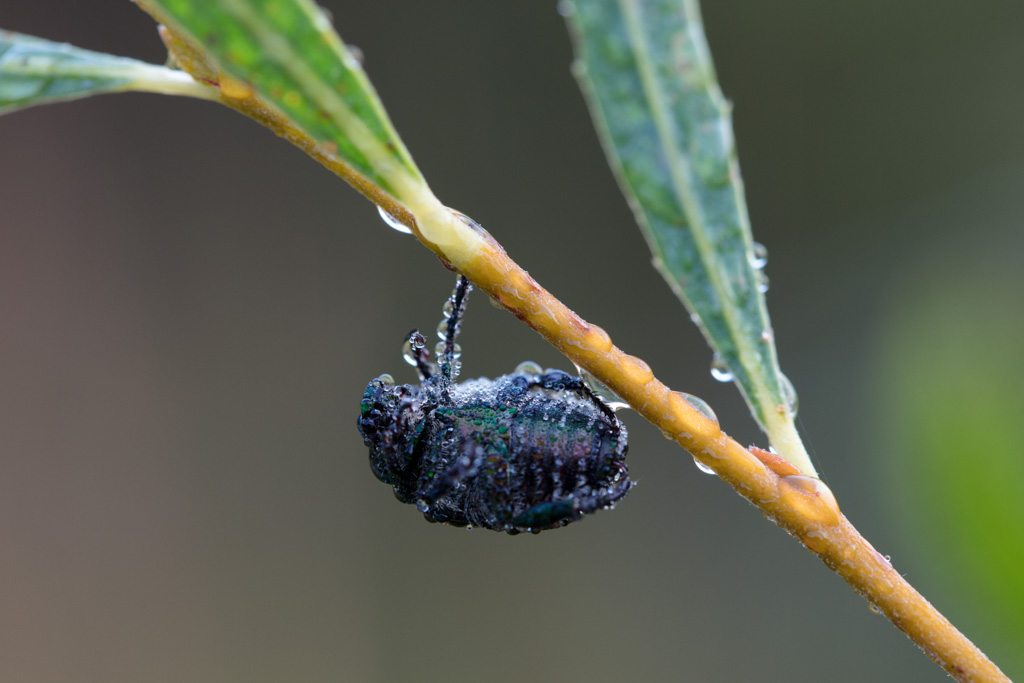From notes taken on September 19th: Up this morning at 5 am and down to the Evergreen Brickworks where I continue to hunt for dew-covered bugs. The forecast called for a low of 6o C which proved accurate. However, in the low-lying areas around the Brickworks, the dew had turned to frost. There were no bugs. So there we have it: the first frost of the season. I still got some lovely shots of tiny ice crystals along the edges of petals and leaves. The most striking shots happened just as the morning sun appeared over the ridge of Governor’s Hill. A few perfect minutes that vanished beneath the sun’s overbearing presence.
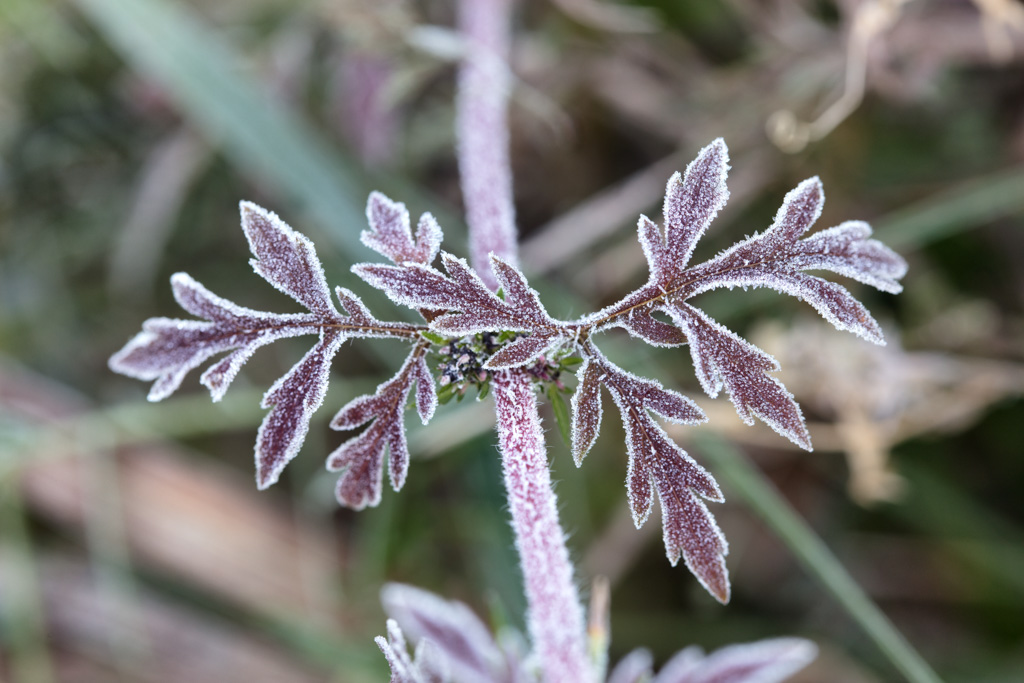
The thing I observed most plainly was the thing I was least able to capture with a camera: the absence of bugs and, as a consequence, the scant numbers of birds. In August, I had read an article about a striking drop in insect populations across North America (See the “Windshield Phenomenon” in Wikipedia which compiles a useful list of references). People first noticed it because they weren’t having to clean their windshields after long drives. At the time, I was dismissive because I was in Haliburton, in the heart of cottage country, where the mosquito appetite for human blood continued unabated. I had responded like a climate change denialist, taking my anecdotal experience as evidence that could refute the broad trends. Now, I have the opposite anecdotal experience—a place devoid of bugs—and I don’t know what to make of it.
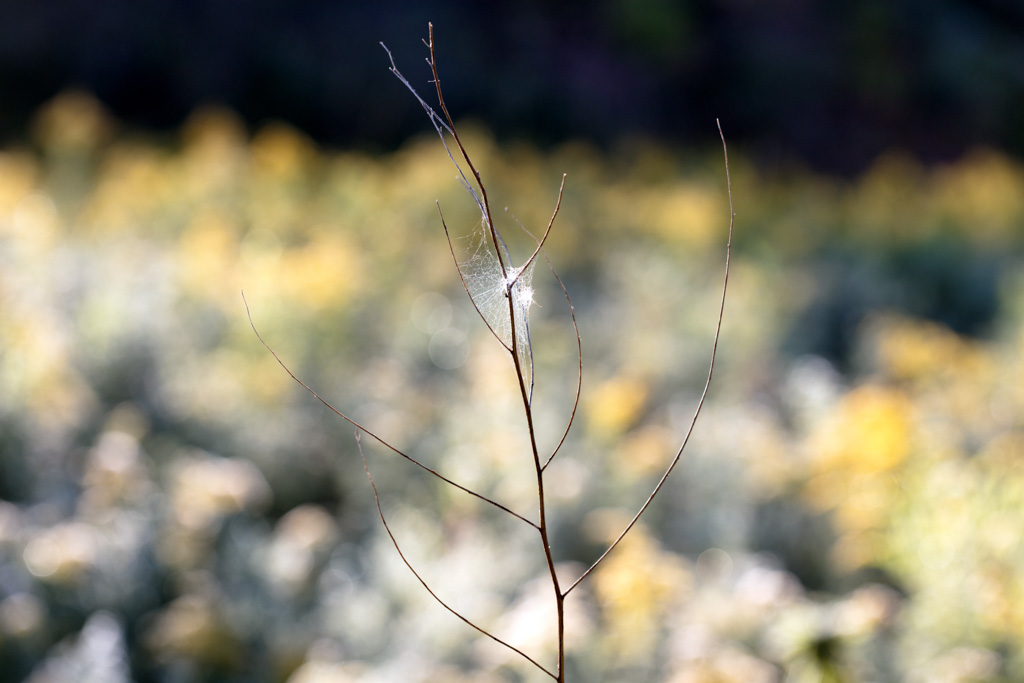
One of the challenges I occasionally encounter as a photographer can be framed as a question: how can I use my camera to represent something that is not there? How do I capture an absence? How do I document a lack? This is a question that struck me with force earlier in the year with the onset of Covid-19. When I first broke my self-isolation regimen and walked with a camera through the streets of my neighbourhood, what I noticed most were things gone missing. Yet, in their absence, my camera (or maybe my imagination) was ill-equipped to treat them. There was less bustle. People had abandoned the streets and shops and places of business. But how do you use a camera to portray less bustle?
I tried. There was a hot dog stand on the corner of Bloor and St. George suddenly gone. I photographed the marks on the sidewalk where it had once stood. Technically, the photograph succeeds in documenting what was formerly there but now gone. But it doesn’t make for an interesting photograph and isn’t worth sharing.
The most logical way to document an absence with photography is to present before and after images. Here is a street crowded with people; here is the same street all but empty. This approach treats photography as a wholly documentary exercise devoid of aesthetic or other non-evidentiary aims. Another approach might be to doctor photos, blurring people who pass through the frame so they look like ghosts haunting human landscapes. Fair enough, but this is no longer documentary photography and, instead, serves other aims.
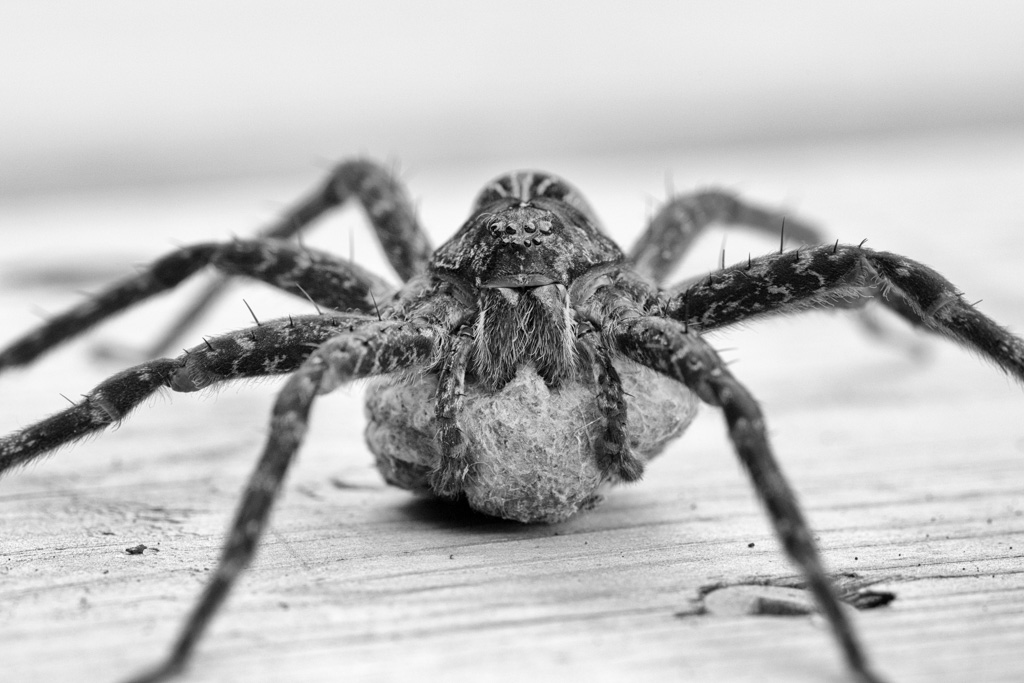
As it does with other endeavours, Covid-19 exposes a weakness of photography. As documentary evidence, photography is largely useless, not because photographs are easily manipulated (although there’s that) but because, as evidence, photographs are the visual equivalent of anecdote or rhetoric. One need only look to the news cycle and its dependency upon the stock image business. Stock images contribute nothing substantive to the story, but there they are, swaying our opinions, piquing our emotions, calling us to arms.
If I want to make an argument, I begin with a proposition, then I present evidence to support my proposition, and the evidence carries my reader to an ineluctable (because logical) conclusion. It is a linear time-bound process and, for that reason alone, ought to exclude photographs as meaningful evidence. Photographs are non-linear gestalts that stand outside time. The closest they come to time-bound is by raising the inference of a narrative (two people smile at one another and we infer perhaps the beginning of a relationship) but this is an illusion just like the illusion of a three dimensional world on a two dimensional plane.
But photographs should also be excluded for the more potent reason that, since the rise of statistical analysis, most propositions marshal evidence in the form of data. A photograph is unsuitable here. A photograph is an instance, not an aggregate. A photograph is an anecdote, not a trend. A photograph is a rumour, not a fact.
In the middle of a global pandemic, we are growing more accustomed to hear facts presented as statistical movements: R-factors, viral loads, community transmission, infection rates. Photographs aren’t of much representational value here. In these circumstance, I would rather use photographs to stir people. To offer solace and maybe some measure of hope.
